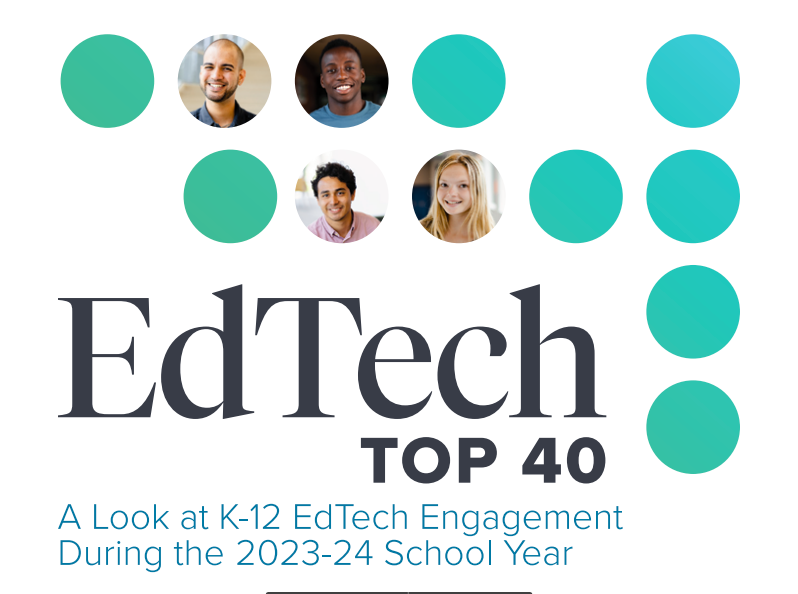“The evidence is clear: tech-enabled learning is here to stay,” said Melissa Loble, Chief Academic Officer at Instructure. “As districts continue to explore different tools to enhance learning, the obstacles they now face aren’t just about picking the best tool, but picking safe, effective and interoperable tools that work together to build a highly effective learning ecosystem. Districts need trusted guidance and transparent information to empower them to make efficient and effective decisions that will improve teaching and learning.”
School districts accessed an average of 2,739 distinct edtech tools annually, with an average of 1,436 tools accessed each month during the school year. This indicates that districts are continuing to explore different technological tools over the course of the school year in order to improve or assist the learning experience.
“The increase in tools used isn’t a surprise,” said Shiren Vijiasingam, Chief Product Officer at Instructure. “On the one hand, we know districts are actively looking for opportunities to consolidate their edtech, but with the explosion of new AI-enabled tools, there has been a lot of experimentation. We expect scrutiny on how these tools are helping the teaching and learning process.”
As with previous years, the top 40 tools continue to remain consistent with only a handful of new products joining the list. The five new entrants to the EdTech Top 40 this academic year include PBS, Panorama Education, Scratch, Adobe, and Grammarly; the latter three indicating the quickly increasing prevalence of AI in schools and drawing attention to the need for best practices to guide its use.
Educators are using technology to boost student engagement, personalize learning and save time, but how do they know what’s making a difference? The report found that 32% of the tools on the 2024 Edtech Top 40 have published research that meets one of the Every Student Succeeds Act (ESSA) four tiers of evidence. The ESSA framework offers an accessible model for educators to identify research-backed edtech, ranging from innovative new solutions to established tools with empirical validation. School districts are increasingly seeking ESSA-aligned research as part of their vetting processes to make evidence-based decisions.
Consistent with previous years, this report analyzed products performing specific functions to provide a deeper look at the top education technology tools within key categories. This year’s categories include Learning Management Systems (LMS), Supplemental Platforms, Courseware Platforms, Study Tools, Classroom Response & Assessment Tools, and Sites and Resources. Recognizing the rise of LMS solutions as the hub of teaching and learning, the report also offered a snapshot of the fifteen solutions most commonly accessed within Canvas, the second-most used LMS, and found just under 50% overlap with the Top 40 list.
Data for both the rankings and usage metrics was gathered via LearnPlatform’s Inventory Dashboard from September 1, 2023, through May 31, 2024. This Inventory Dashboard seamlessly integrates with browsers and mobile device management systems, providing transparent insight into the edtech tools utilized by students and educators in any U.S. educational institution. The report offers a comprehensive analysis of over 57 billion engagements spanning more than 9,000 education technology products throughout the year.
Analysis, tools and reports are compliant with all federal and state student data privacy laws, including FERPA, COPPA, CIPA and PPRA. The Edtech Top 40 is based solely on quantitative analysis of engagement, and does not reflect user sentiment, effectiveness, or utility. (For additional detailed insights, evidence, and more information on any education technology, educators and leaders should access LearnPlatform by Instructure)
“Year after year, the EdTech Top 40 has provided comprehensive data of K-12 education technology engagement across our nation’s districts,” Loble concludes. “Data-driven decision-making is more important than ever when assessing the role of technology in our schools. This is why the EdTech Top 40 remains more relevant than ever.”


